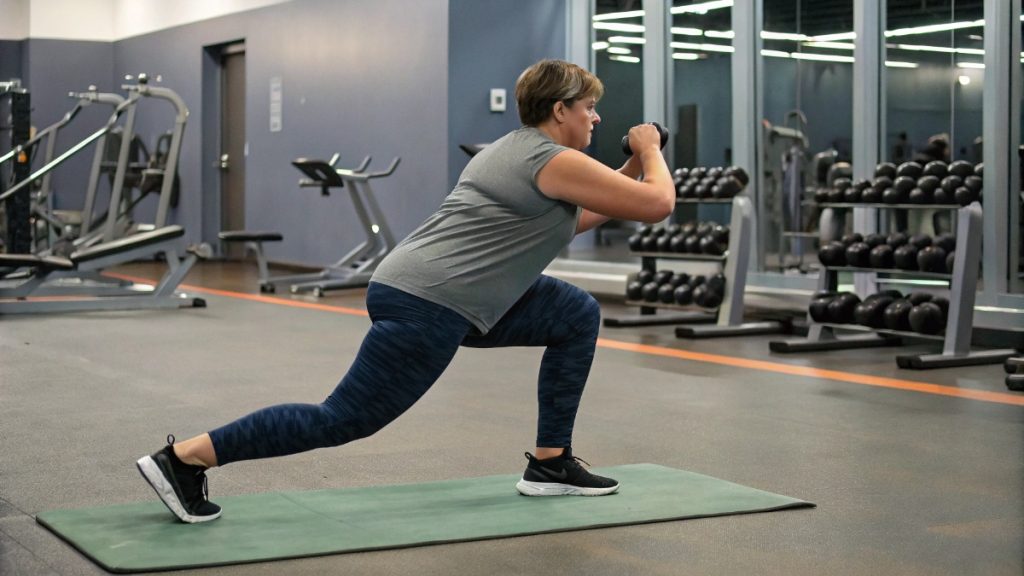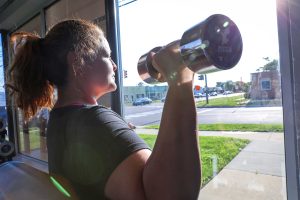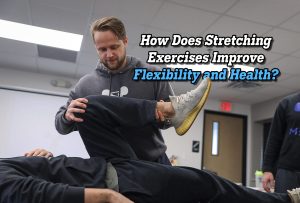Finding the best exercise routine for weight loss can be confusing. With so many workout plans, fitness influencers, and quick-fix programs promising results, it’s easy to feel overwhelmed. But sustainable fat loss doesn’t come from one magic exercise or diet trend; it’s the result of combining effective workouts, proper nutrition, and consistency. The ideal plan balances cardio, strength training, and flexibility work, creating a comprehensive fitness approach that not only helps you lose weight but also builds lean muscle, boosts metabolism, and improves your overall health. Let’s break down what that perfect blend looks like and how to make it work for you.
Key Components of a Fat-Loss Plan
To create an effective fat-loss routine, you need to focus on three pillars: cardiovascular exercise, resistance training, and flexibility or mobility work. Each plays a critical role in helping you shed fat, preserve muscle, and enhance your overall fitness.
- Cardio for calorie burn and endurance
Cardiovascular exercise raises your heart rate, boosts circulation, and helps your body burn calories efficiently. Whether you prefer running, cycling, rowing, or brisk walking, cardio helps increase energy expenditure and promotes fat loss. But not all cardio is created equal. The type, duration, and intensity of your workouts can greatly influence your results. - Strength training for muscle growth and metabolism
Building muscle is crucial for long-term weight management. Lean muscle tissue burns more calories at rest than fat does, which means that resistance training doesn’t just shape your body; it also boosts your resting metabolic rate. When you combine cardio with strength training, you create the ultimate formula for fat loss and total-body transformation. - Flexibility and mobility for recovery and performance
Stretching, yoga, or mobility-focused sessions are often overlooked, yet they play a vital role in injury prevention, posture improvement, and recovery. By maintaining flexibility, your body moves more efficiently during workouts, allowing you to perform better and stay consistent without setbacks.
Combining Cardio and Resistance Training
The secret to an ideal fat-loss routine is balance. Too much cardio without strength work can lead to muscle loss, while too much strength training without enough cardio can limit your calorie burn and endurance. Finding the right mix allows your body to tap into fat stores while maintaining lean muscle.
A well-designed weekly plan might look like this:
- 3 days of strength training focusing on full-body movements like squats, deadlifts, push-ups, and rows
- 2 to 3 days of cardio alternating between high-intensity intervals and steady-state sessions
- 1 to 2 days of flexibility or mobility work such as yoga, foam rolling, or stretching
This balance ensures you’re improving cardiovascular health, building strength, and supporting recovery simultaneously.
HIIT vs. Steady-State Cardio
Cardio can take many forms, but two of the most effective styles for fat loss are High-Intensity Interval Training (HIIT) and steady-state cardio. Each has unique benefits, and the best results often come from combining both.
High-Intensity Interval Training (HIIT) involves short bursts of intense activity followed by rest or low-intensity recovery periods. For example, sprinting for 30 seconds and walking for 60 seconds, repeated 8 to 10 times. HIIT workouts are efficient, often lasting 20 to 30 minutes, and they keep your metabolism elevated for hours after you finish exercising, a phenomenon known as excess post-exercise oxygen consumption (EPOC). This afterburn effect helps your body continue to burn calories even while you rest. HIIT is especially effective for people short on time who want to maximize calorie burn and improve endurance quickly.
Steady-state cardio, on the other hand, involves maintaining a moderate intensity over a longer duration, such as a 45-minute jog, a bike ride, or swimming laps at a consistent pace. While it doesn’t produce the same afterburn effect as HIIT, steady-state cardio is excellent for building aerobic capacity, improving heart health, and supporting recovery between intense strength sessions. It’s also easier on the joints and can be more sustainable for beginners.
The takeaway:
- HIIT = higher calorie burn in less time, better for advanced exercisers.
- Steady-state = great for endurance and recovery, ideal for all levels.
For optimal results, try alternating between HIIT and steady-state sessions throughout your week. This variety keeps your workouts engaging while targeting fat loss from multiple angles.
Strength Training Frequency
When it comes to losing fat while preserving muscle, strength training is non-negotiable. The key is consistency and progression. Beginners can start with 2 to 3 full-body sessions per week, focusing on compound movements that work multiple muscle groups at once. These exercises not only burn more calories per session but also build balanced strength across your body.
Here’s a sample structure:
- Day 1: Full-body strength (squats, presses, rows)
- Day 2: Active recovery (light cardio or mobility work)
- Day 3: Strength (deadlifts, pull-ups, lunges)
- Day 4: Cardio (HIIT or steady-state)
- Day 5: Strength (core and accessory work)
- Day 6: Cardio or flexibility session
- Day 7: Rest or active recovery
For intermediate to advanced trainees, adding more resistance-focused days, such as alternating upper and lower body splits, can provide even better muscle definition and metabolic benefits. The key is progressive overload: gradually increasing weight, reps, or sets over time to continue challenging your muscles.
Why strength training helps with fat loss:
When you lift weights, you create small micro-tears in muscle fibers that your body repairs post-workout. This recovery process requires energy, increasing your calorie burn long after your workout ends. Additionally, muscle tissue is metabolically active, meaning the more muscle you have, the more calories you burn at rest. Over time, this shift in body composition (less fat, more muscle) not only changes your appearance but also enhances your metabolism.
Nutrition’s Role in Your Routine
Exercise alone won’t deliver long-term fat loss. To achieve lasting results, your workouts must be supported by a well-balanced, calorie-controlled diet. Nutrition accounts for roughly 70–80% of your success in weight management, and it’s essential to align your eating habits with your training intensity and goals.
Your goal is to create a moderate calorie deficit, burning slightly more calories than you consume, while maintaining adequate protein intake to preserve lean muscle. Instead of drastic restriction, focus on nutrient-dense foods that fuel performance and recovery.
Key nutrition strategies include:
- Eating enough protein to support muscle repair (aim for 0.7–1 gram per pound of body weight)
- Prioritizing complex carbohydrates like oats, quinoa, and vegetables to sustain energy
- Incorporating healthy fats such as avocados, olive oil, and nuts for hormone balance
- Drinking plenty of water to aid digestion and performance
- Avoiding ultra-processed foods and excess sugar that contribute to inflammation and cravings
A balanced diet not only supports your training but also stabilizes energy levels, enhances recovery, and keeps hunger under control.
Tracking Calories and Macros
For those serious about results, tracking your calories and macronutrients (macros) can be a game-changer. Understanding how much you’re eating and what those calories are composed of helps you make informed adjustments based on your progress.
Calories: The total amount of energy you consume each day. To lose fat, you need to eat slightly fewer calories than you burn. A deficit of 300–500 calories per day is typically effective and sustainable.
Macronutrients: These are the nutrients your body needs in large amounts: protein, carbohydrates, and fats.
- Protein supports muscle repair and keeps you feeling full.
- Carbohydrates fuel workouts and daily activity.
- Fats regulate hormones and aid nutrient absorption.
Many fitness apps and trackers can help you log meals, estimate calorie needs, and monitor macronutrient balance. Using these tools can reveal patterns you might overlook, such as hidden calories in sauces or snacks, helping you fine-tune your diet without guesswork.
Pro Tip: Don’t obsess over perfection. Tracking is meant to guide, not restrict. Over time, you’ll learn portion sizes and food choices that naturally align with your goals.
The Importance of Recovery and Consistency
Recovery is where progress happens. After each workout, your muscles rebuild stronger and your body adapts to the stress of exercise. Without adequate rest, you risk fatigue, burnout, or injury, all of which can derail your fat-loss journey. Incorporate at least one full rest day per week and prioritize sleep (7–9 hours nightly) to maximize your results.
Active recovery, including light activities like walking, yoga, or swimming, keeps your body moving without overtaxing your system. Massage, foam rolling, and stretching can also improve circulation and reduce muscle soreness, helping you bounce back faster.
Consistency beats intensity. While motivation may fluctuate, sticking with your plan long-term produces real transformation. Even moderate workouts done consistently outperform sporadic bursts of high effort. Building habits, such as scheduling workouts at the same time each day or prepping meals in advance, creates a foundation for lifelong fitness success.
Measuring Progress Beyond the Scale
The number on the scale doesn’t always tell the full story. As you gain lean muscle and lose fat, your body composition improves even if your weight doesn’t drop dramatically. Instead of focusing solely on the scale, track progress using multiple indicators:
- Body measurements: Waist, hips, and chest circumferences show fat loss more accurately than weight alone.
- Progress photos: Visual comparisons highlight changes in muscle tone and posture.
- Performance improvements: Increased strength, endurance, and mobility signal progress even before visible changes appear.
- Energy and mood: Feeling stronger and more energetic is often the best sign your plan is working.
Remember, fitness is a journey, not a quick sprint. Celebrate small victories along the way; they’re the building blocks of lasting success.
Building a Sustainable Lifestyle
An ideal exercise routine for weight loss isn’t about temporary fixes or extreme regimens. It’s about creating a sustainable lifestyle that balances activity, nutrition, and recovery. Over time, your workouts should evolve to challenge your body in new ways while keeping you engaged and motivated.
If you find yourself struggling to stay consistent or unsure how to structure your program, seeking professional guidance can make a world of difference. Personalized coaching ensures your training and nutrition align with your specific goals, fitness level, and body type.
Take the Next Step with Michigan Elite Conditioning for Athletes (MECA)
Ready to take your fitness to the next level? MECA is here to help you reach your full potential. Founded in 2011 by strength and conditioning coach David Lawrence, our mission is to elevate the level of health and sports performance across Michigan. With expert trainers, state-of-the-art equipment, and individualized programs, we provide a comprehensive approach to fat loss, athletic performance, and overall wellness.
Whether you’re just beginning your fitness journey or looking to break through a plateau, MECA’s science-based methods and caring coaching team will help you build strength, burn fat, and transform your body safely and effectively. Experience the difference that expert programming, accountability, and support can make in your results.
Contact us today to learn more, schedule your first session, and start building your strongest, healthiest self.












